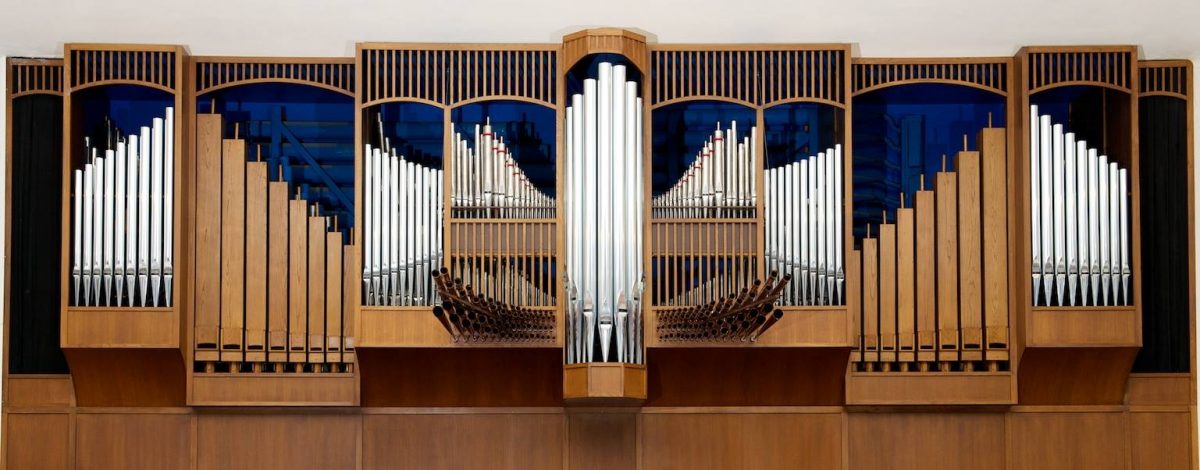The Messiah Festival has been an annual tradition of Bethany College and the Lindsborg community since the inception of the Bethany Oratorio Society in 1881. On March 28, 1882, the Oratorio Society gave its first performance of George Friedrich Handel’s Messiah, and the piece has been performed every Palm Sunday and Easter Sunday since. On March 29, 1929, the Oratorio Society introduced Johann Sebastian Bach’s Passion According to Saint Matthew to the Messiah Festival and this piece also became a part of the tradition, now performed every Good Friday. Lindsborg’s Messiah Festival boasts the longest running annual performance of the Messiah in the entire United States. [1] In the spring of 1917, the Oratorio Society was gearing up for its 36th annual Messiah Festival.

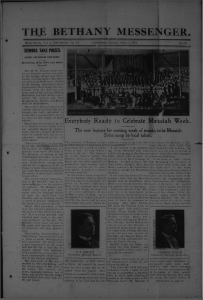
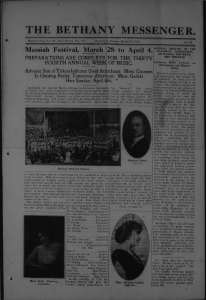 Week. The April 4, 1914 edition of The Bethany Messenger dedicated its front page to a spread featuring the oncoming
Week. The April 4, 1914 edition of The Bethany Messenger dedicated its front page to a spread featuring the oncoming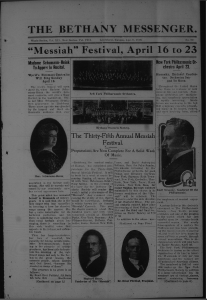 Holy Week festivities – “Everybody Ready to Celebrate Messiah Week,” the headline reads. [3] While the rest of the world was on the brink of war, America remained steady, and Lindsborg remained focused on the tradition of the Messiah Festival. War was declared abroad on July 28, 1914, just a few short months after the 1914 Messiah Festival took place. Although the war raged on abroad, 1915 and 1916 editions of The Bethany Messenger saw no change to the prevalence it placed on the Messiah Festival.
Holy Week festivities – “Everybody Ready to Celebrate Messiah Week,” the headline reads. [3] While the rest of the world was on the brink of war, America remained steady, and Lindsborg remained focused on the tradition of the Messiah Festival. War was declared abroad on July 28, 1914, just a few short months after the 1914 Messiah Festival took place. Although the war raged on abroad, 1915 and 1916 editions of The Bethany Messenger saw no change to the prevalence it placed on the Messiah Festival.
In the spring of 1917, the Bethany Oratorio Society was gearing up for the 36th annual Messiah Festival.
In the spring of 1917, America was gearing up to fight World War I.
America declared war on the Central Powers on April 6, 1917 – Good Friday. Two days later, the Bethany Oratorio Society gave its 36th performance of Handel’s Messiah. The year 1917 was the first year that the Messiah Festival schedule was altered due to the war. That June, the Oratorio Society members packed their bags and made way toward Camp Funston, a training camp for World War I soldiers located on Camp Riley southwest of Manhattan, Kansas. This was not a usual performance for Oratorio members -the show closed with the chorus’ rendition of “The Battle Hymn of the Republic,” and an article in The Bethany Messenger regarding the events of this particular concert reads:
Because these men were going from that camp into such a conflict, this Chorus had come to hearten them for their fight in defense of outraged humanity. When the Chorus closed with ‘The Battle Hymn of the Republic,’ it is certain that thousands of American soldiers had a clearer sense of what they were going to fight, and a more certain trust in the righteousness of their cause… They sat up straight and from their eyes shone the spirit of the new Crusade. They were going out into the world to make straight the highway for our God. [6]
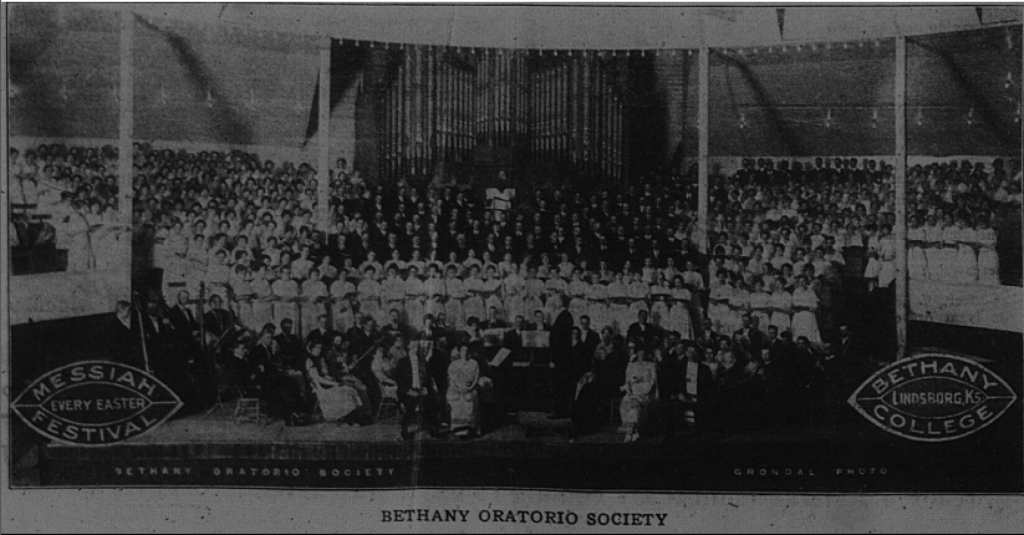
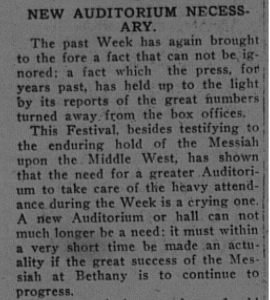

Although a larger auditorium was called for, construction did not start, and 1918 saw the Great War complicate the work of the Oratorio Society, at least indirectly.
The Spanish flu ravaged campus during the spring, forcing Bethany to close for a week and postponing Messiah until early May. The performance went on with the usual exuberance of earlier performances.
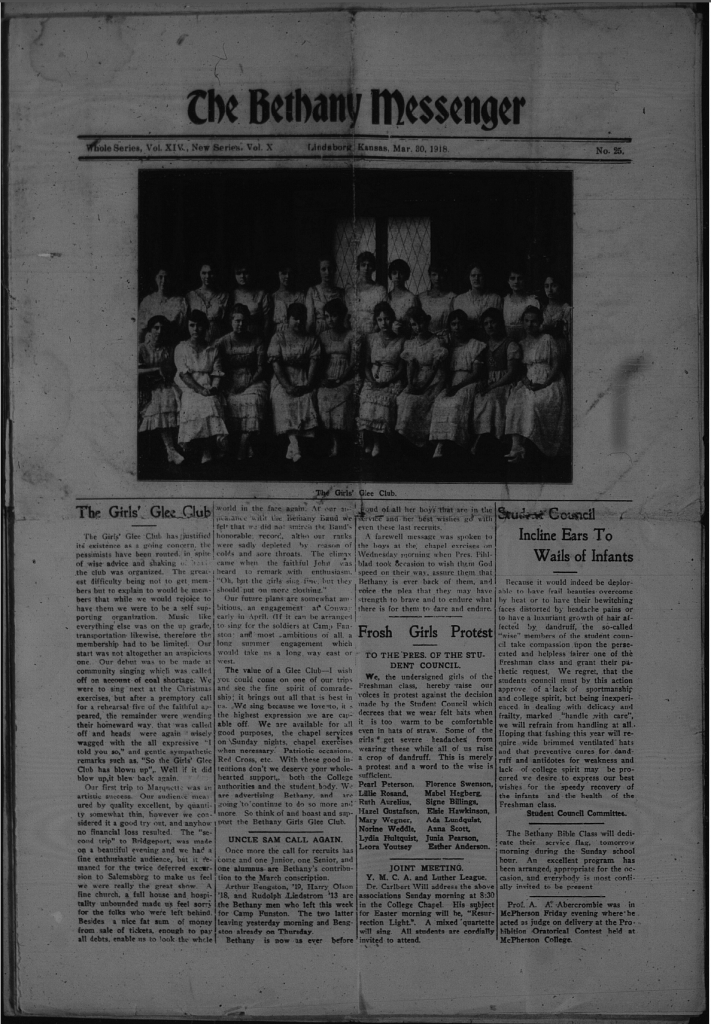

The tradition of the Messiah Festival never died out. The Bethany Oratorio Society still comes together every year to tell the story of Jesus Christ’s birth, life and death through the works of Handel and Bach. The last season, in the spring of 2016, marked the 135th anniversary of the Messiah Festival, and now preparations are being made for the 136th performance coming in the spring of 2017.
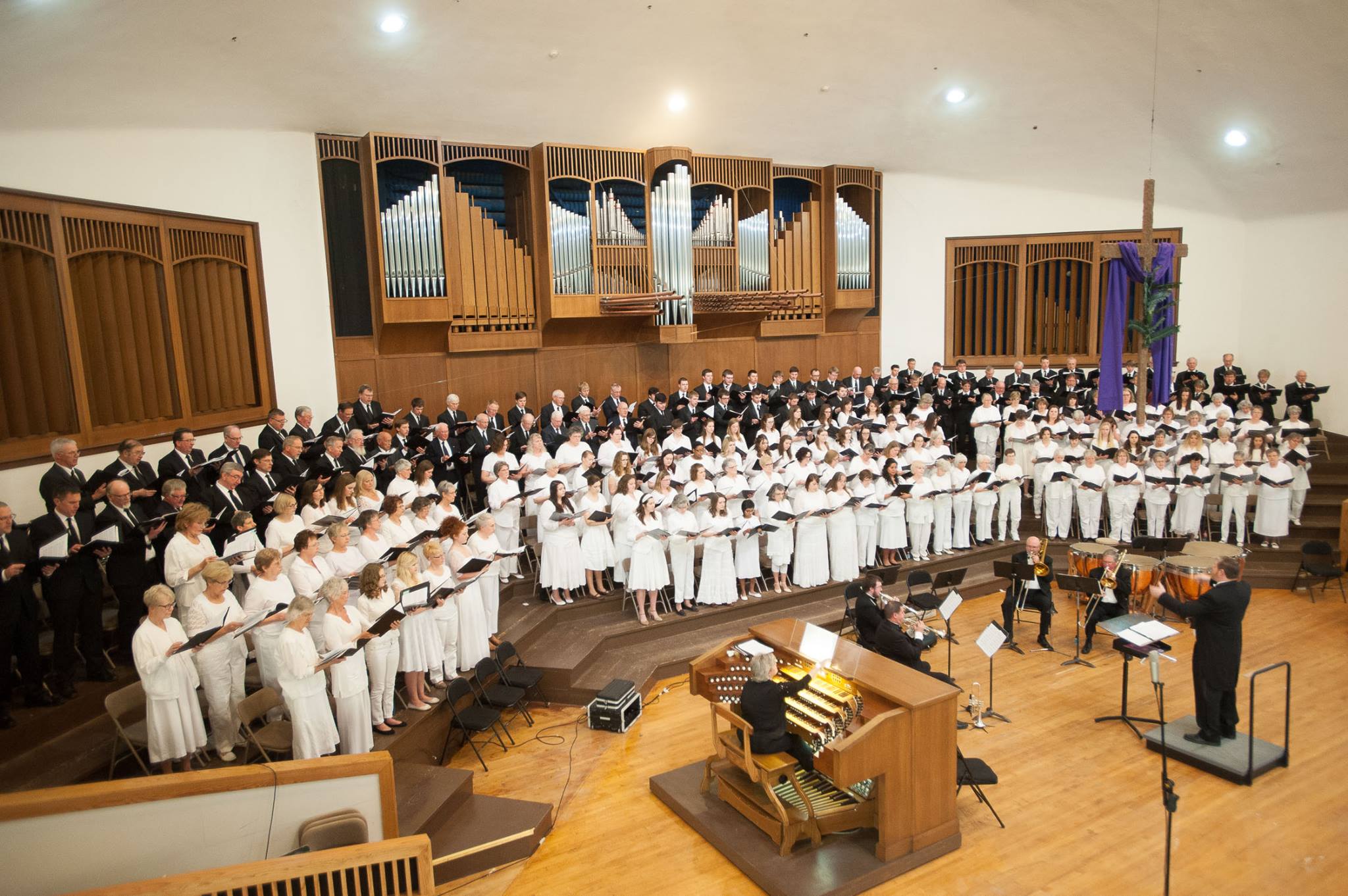
[1] “The Tradition: The First Festival,” Bethany College, accessed December 6, 2016, www.messiahfestival.org/festival/tradition.
[2] “Lindsborg Explorations,” Kansas Sampler Foundation, accessed December 6, 2016, http://www.getruralkansas.com/Lindsborg/69Explore/684.shtml.
[3] The Bethany Messenger, April 4, 1914.
[4] The Bethany Messenger, March 30, 1915.
[5] The Bethany Messenger, April 8, 1916.
[6] The Bethany Messenger, July 12, 1917.
[7] The Bethany Messenger, March 31, 1917.
[8] Ibid.
[9] The Bethany Messenger, April 14, 1917.
[10] The Bethany Messenger, March 30, 1918.
[11] Ibid.
[12] “Bethany College,” Facebook, accessed December 6, 2016, https://www.facebook.com/bethanycollegeks/photos/a.10150901848009251.530556.93723094250/10154735744974251/?type=3&theater.

